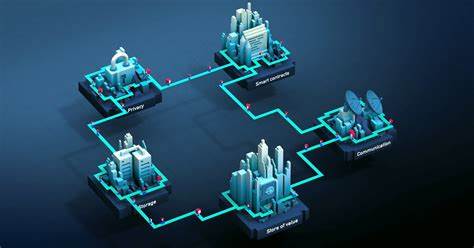
In the early days of blockchain technology, proof of work (PoW) was the default consensus method . Although secure and decentralized, this method poses serious ecological and scalability problems . This is how the proof of stake (PoS) solution was quickly born , based on the deposit of a deposit (in cryptocurrencies) rather than a complex mathematical equation.
This new consensus method also sees the appearance of “ masternodes”, or master node in French. These nodes do not produce blocks , but must verify the validity and legitimacy of transactions posted by other nodes. By taking on this critical role, the holder of a masternode receives rewards in the form of cryptocurrency.
However, even though masternodes have emerged with proof of stake, these are not limited to such blockchains . In addition, this consensus method does not necessarily depend on masternodes to ensure its operation. Indeed, other blockchains use different architectures.
Nodes in the world of blockchain Simply put, a node is any type of computing device whose purpose is to maintain a blockchain . Their primary objective is to broadcast, relay, verify and validate all transactions on a network by running the network's protocol. This protocol is a set of rules and tools that all stakeholders in a blockchain agree to respect. Thus, nodes create new blocks containing transactions, which are then verified by other nodes in the network .
These entities are not inherent to proof-of-stake blockchains . Indeed, we find nodes in almost all current blockchains such as Bitcoin or Ethereum. Although this differs widely depending on the blockchain, we can distinguish three main categories of nodes :
“Light nodes” are the weakest in terms of computing power. They only have a partial copy of the blockchain , and take turns verifying transactions, according to a random selection system;
“Full nodes”, or complete nodes, are much more powerful . As the name suggests, these store all history and ledger details of the blockchain;
Masternodes are more advanced full nodes with greater responsibilities within the network . Unlike the first two, these nodes do not create new blocks . They are only responsible for verifying transactions.
Although there are three main categories of nodes, each blockchain chooses its architecture , and therefore the types of nodes it needs. Ethereum, for example, uses lightweight, full nodes in addition to archive nodes (variants of full nodes optimized to serve as long-term storage). In addition, few blockchains use masternodes ,
From a technical point of view, a masternode is a modified full node and therefore has a full copy of the blockchain. However, unlike traditional full nodes, it is only responsible for validating and verifying transactions .
People will pass their transactions through the masternode and it is this structure which will validate these transactions . The node holder will then receive commissions , in the form of the native cryptocurrency of the network on which. By doing this, it is possible to earn crypto-assets without making any effort , other than the initial technical and financial effort which consists of setting up the system.
Beyond validating transactions, masternodes have other responsibilities within a blockchain, particularly that of governance , as evidenced by their nickname: “governance hub”. Thus, these hubs have votes to vote on important governance decisions . Another responsibility, and not the least: they can take charge of additional network functionalities. This is the case, for example, of the “PrivateSend” tool at Dash which makes it possible to anonymize transactions. These features differ widely between blockchains.
Masternodes in practice
The prerequisites and constraints necessary for installing a masternode
In order to install and run a masternode correctly, there are many prerequisites and constraints to take into account. Here are the most important ones:
A large sum of native tokens is necessary to create your masternode. This amount may or may not be refundable , and constitutes a significant barrier to entry. In fact, the amounts required often exceed the $10,000 mark ; It is also necessary to have a minimum of technical knowledge to operate a knot. Indeed, it is often hosted in the cloud , on an OS like Linux . You must therefore know these environments to be able to install everything necessary (notably the wallet and the software). This is all the more true as there are many updates to be carried out, not to mention possible problems linked to the infrastructure; Finally, a masternode is not a simple printing press . Indeed, in addition to the constant maintenance of the servers and the infrastructure to be ensured, the masternode must fulfill its role . As mentioned before, this requires involvement in blockchain governance or other more specific responsibilities. One solution to these problems is acquiring masternodes from centralized platforms like Just Mining , which take care of the installation and maintenance for you. These platforms allow investors who do not want to deal with the constraints mentioned above to benefit from the profitability of masternodes. This is done in exchange for sovereignty , because you will not actually own your masternode. These platforms also offer to share masternodes with other users , making it possible to lower the initial investment, and therefore to break down one of the main barriers to investing in masternodes.